The Olympus Air A01 camera is the first, and as far as I know, only Olympus “Open Platform Camera” (OPC). The concept was interesting: provide a camera that could use standard micro four thirds lenses that was designed to be controlled remotely. The camera is smaller than many of the lenses you can use it with and consists of a cylindrical body with a diameter of 57mm and is only 43.6mm long.
Why in 2020, am I writing about a camera released in 2015? I’ve been having a bit of a clear out and came across some of the 3D-printed accessories for the Air. Having decided not to keep them I felt I might as well document Ghene Snowdon’s and my experience with it.
I’m not going to do a full review here. Take a look at techradar’s review if you’re interested. My viewpoint is that of a geek who writes software and dabbles with photography - Ghene Snowdon’s is the real photographer in our household.
Techradar called the Air “a glimpse of the future for photography”, but currently the Air is looking a lot like the past and although still listed on amazon.c.uk it’s marked as “currently unavailable”.
So what was this whole “Open Platform Camera” thing anyway? The idea, as I understand it, was to launch an ecosystem which makers and hobbyists would build software and hardware around. There were SDks for android and iOS and several 3D-printable accessories. Ghene and I are both dyed-in-the-wool geeks and were already long-time Olympus users (being a professional, Ghene already had plenty of Olympus lenses) so this looked like a great camera for us to play with. The first problem was that the Air was not released in the UK (and I’m ont sure that it ever was officially), but amazon.com had no scruples about sending us one from the USA. The app was also not available on the UK pay store or app store but there were ways around that too and the SDK provided a usable basic app for controlling the Air.
The first thing we did was print all the accessories Olympus provided STL files for, so lets have a look at them first.
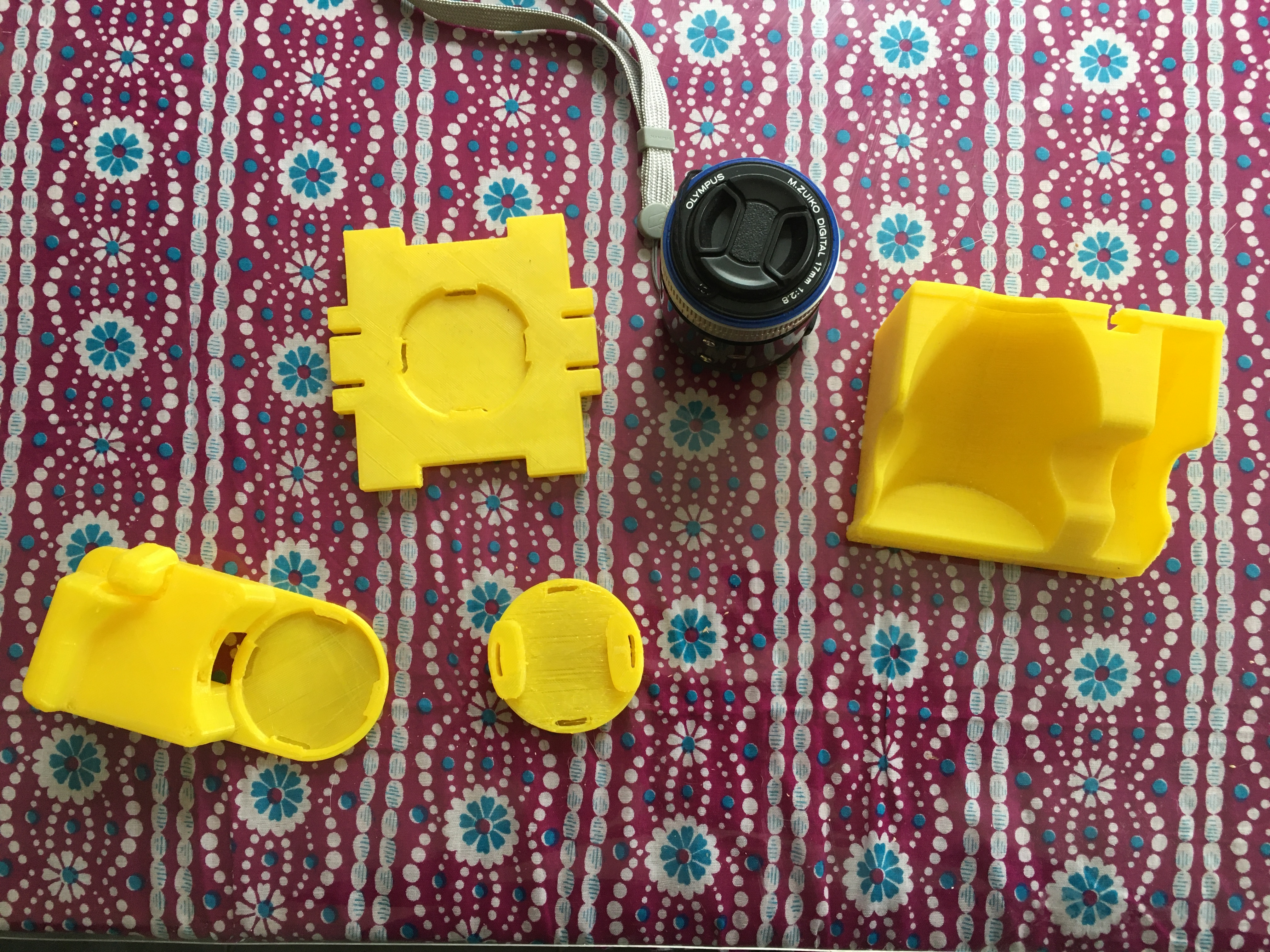
There was a stand with a a slot for a USB cable that you could play the Air on via charging.
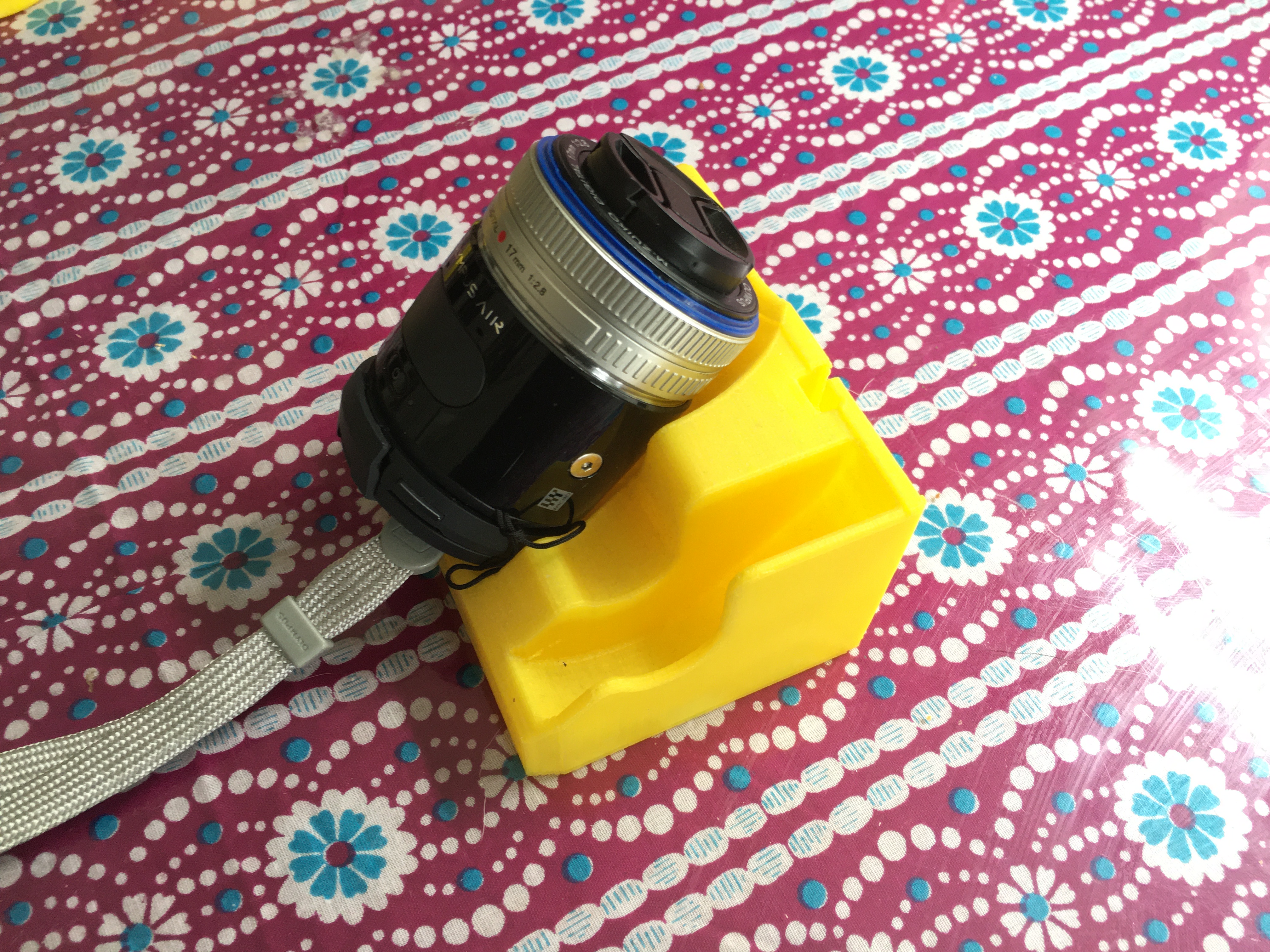
Another accessory provided a way to hold the Air like a normal point and shoot compact camera with a button that was meant to act as a lever and press the Air’s shutter release. We never got this to work properly as the printer we had could not print the lever such that it could move. This one always struck me as a bid odd anyway. If you wanted a camera to hold like a normal compact the Air would not have been your first choice.
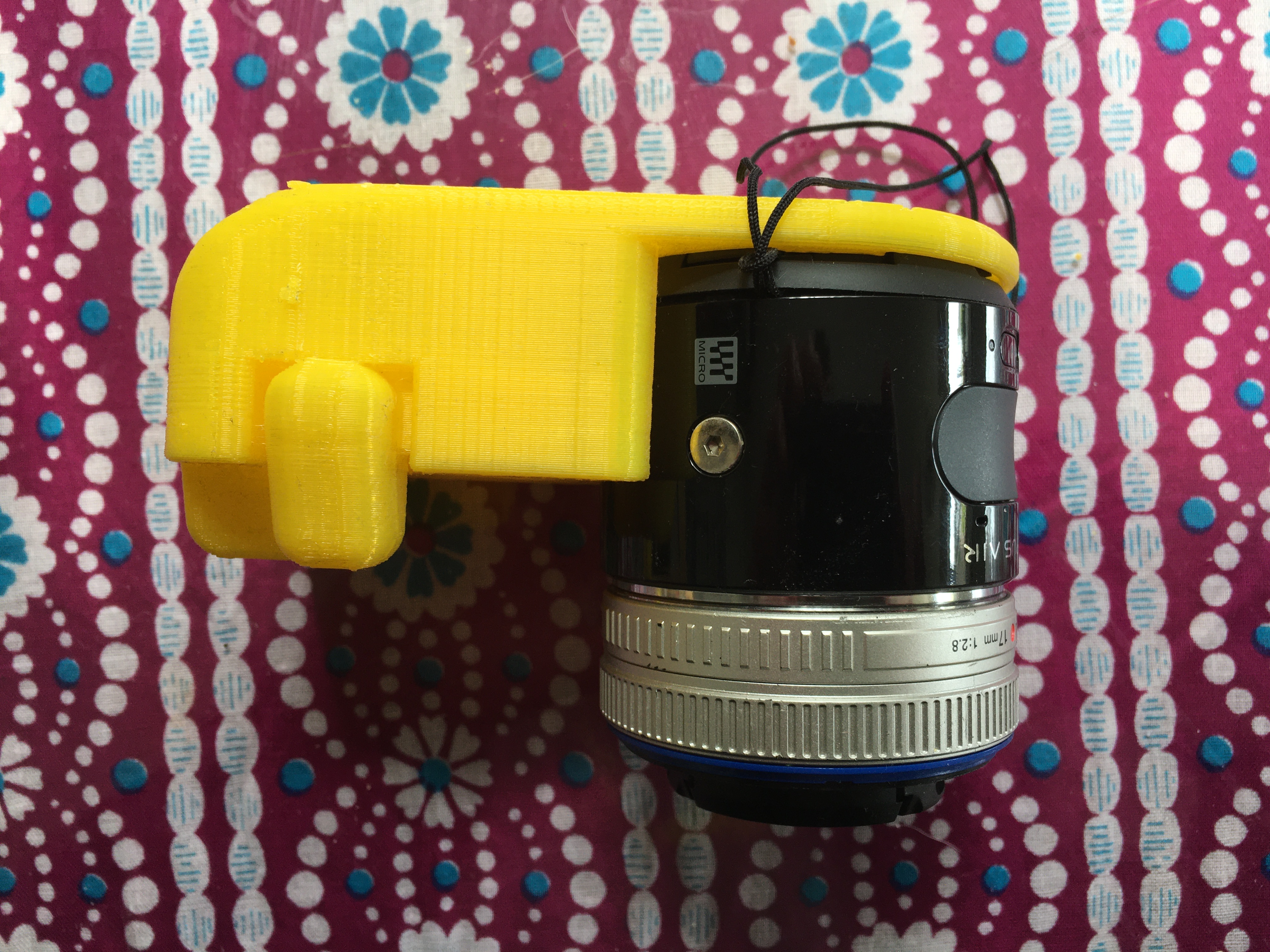
The third accessory looked like it had been designed so that it would like and you could make a collection of multiple Airs. It had a fitting that would lock onto the base of the Air. This would have been nice, but there were issues - more on this later.
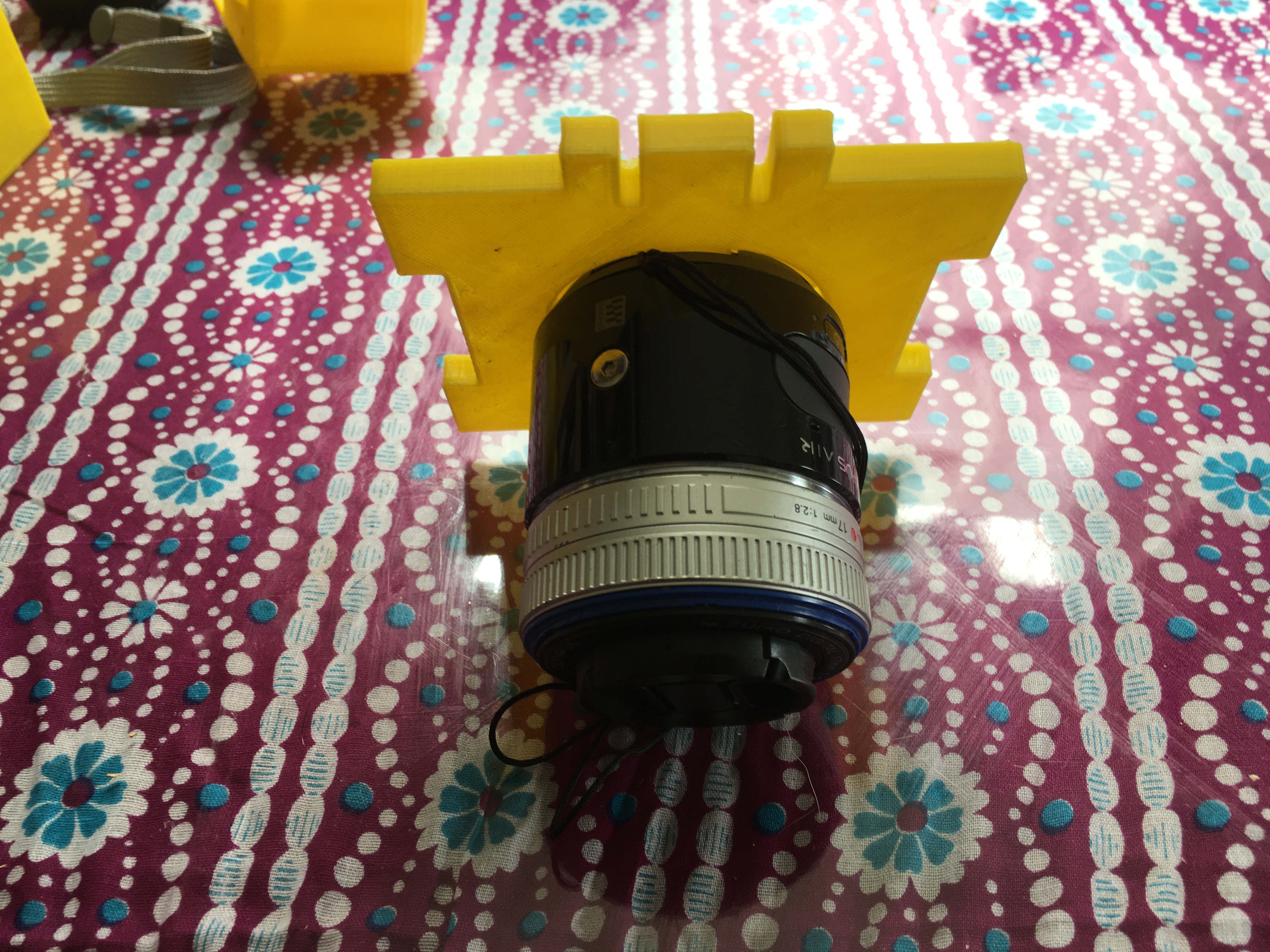
The final accessory we printed looked like it had been designed to attach the Air to curved surfaces via a strap. As for the previous one it would lock securely onto the base of the Air.
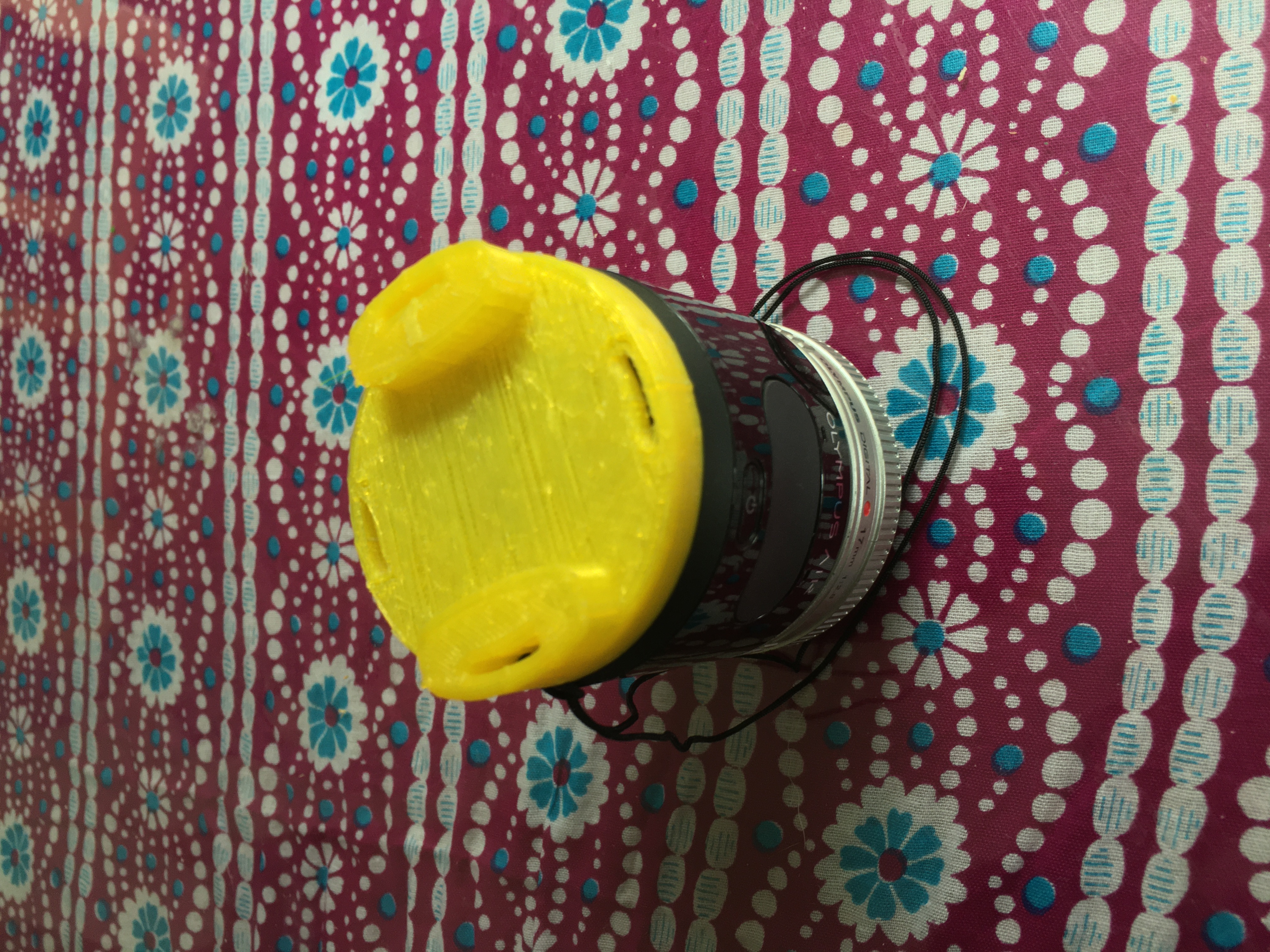
The one accessory that came with the Air itself was a phone holder so that you could mount your phone behind the Air and use it a bit like a point and shoot. As mentioned in the techradar review this was kind of cumbersome and unbalanced so we didn’t use this very much.
One thing that is really nice about the Air is that you could hold it in one hand and point it somewhere while looking at a live image on the phone. Our family holiday in Wales that year featured several videos taken with the Air held out of a train or car window (yeah, I know, not very safe).
One of my first thoughts on seeing the air was that it would be great for something like event photography where you could stick several cameras around a room and a single photographer could switch between them and it’s here that some of the flaws in the Air began to show. Clients connected to the Air via WIFI and/or Bluetooth. I believe that it’s possible to trigger the shutter release via Bluetooth, but if you wanted to see what the camera was seeing or grab images you needed to be connected via WIFI. Sadly, the Air acted as the WIFI access point and so, unless you had multiple WIFI cards it was not possible to get an image stream from more than one Air at once. Also, at the time, (may be different now, I have not checked) there did not seem to be a programmatic way in iOS or android to change WIFI network so automated switching between multiple cameras looked to be not possible without custom hardware (I did think about setting up multiple Raspberry Pis each connected to an Air, but never got around to buying a second Air and trying it).
The battery life of the camera was not great either. The battery is not removable but it is possible to use the camera while charging from USB so using a portable power pack can mitigate this somewhat.
The connectivity limitations were the reason I lost interest in the camera, but I suspect what did for it was improvements in smartphone cameras. After all why use a separate device to take pictures from your phone when your phone takes good-enough pictures by itself? Olympus also bear some of the blame: my impression was that they released the camera and expected the world to come to them - they could have done a much better job of building a community around the camera in my opinion.